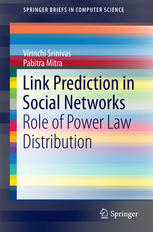

Most ebook files are in PDF format, so you can easily read them using various software such as Foxit Reader or directly on the Google Chrome browser.
Some ebook files are released by publishers in other formats such as .awz, .mobi, .epub, .fb2, etc. You may need to install specific software to read these formats on mobile/PC, such as Calibre.
Please read the tutorial at this link: https://ebookbell.com/faq
We offer FREE conversion to the popular formats you request; however, this may take some time. Therefore, right after payment, please email us, and we will try to provide the service as quickly as possible.
For some exceptional file formats or broken links (if any), please refrain from opening any disputes. Instead, email us first, and we will try to assist within a maximum of 6 hours.
EbookBell Team

5.0
88 reviewsThis work presents link prediction similarity measures for social networks that exploit the degree distribution of the networks. In the context of link prediction in dense networks, the text proposes similarity measures based on Markov inequality degree thresholding (MIDTs), which only consider nodes whose degree is above a threshold for a possible link. Also presented are similarity measures based on cliques (CNC, AAC, RAC), which assign extra weight between nodes sharing a greater number of cliques. Additionally, a locally adaptive (LA) similarity measure is proposed that assigns different weights to common nodes based on the degree distribution of the local neighborhood and the degree distribution of the network. In the context of link prediction in dense networks, the text introduces a novel two-phase framework that adds edges to the sparse graph to forma boost graph.